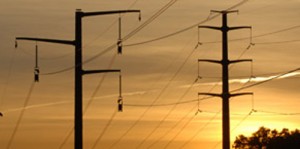A couple weeks ago, I was in Richmond, Va., for the  2013 EEI/NRECA Utility Siting Workshop. I look forward to this event each year, as it is one of the most focused utility siting workshops in the country. It brings together the brightest players in the industry to discuss current topics that we collectively face. Here are a few of my key takeaways from the event.
2013 EEI/NRECA Utility Siting Workshop. I look forward to this event each year, as it is one of the most focused utility siting workshops in the country. It brings together the brightest players in the industry to discuss current topics that we collectively face. Here are a few of my key takeaways from the event.
The Importance of Public Involvement
Nearly every session and panel touched on public involvement techniques or issues, and a number of sessions were devoted entirely to public engagement topics. This focus on public involvement emphasizes how important these issues are to professionals in transmission line siting. Utilities across the country often face similar problems and concerns when engaging the public about a project, and it is always beneficial to hear the ways others address those issues.
The Underground Transmission Debate
In most new transmission line routing projects, a question regarding the undergrounding of proposed projects inevitably comes up. Here in this part of the Midwest, underground transmission lines are usually prohibitively expensive for the few benefits they provide. However, in a geographic area that experiences frequent and devastating storms, the cost of repairs may make the investment worthwhile. As Theodore Kury, director of energy studies at the University of Florida’s Public Utility Research Center, noted in his session, everyone has a different price they are willing to pay to reduce a risk, which is why a blanket policy of compulsory undergrounding of transmission infrastructure does not make sense financially. For greatest impact and effectiveness, underground policies need to be strategic. It’s important to approach them with a view that those policies will quite likely vary from project to project.
Energy Zone Mapping Tool
James Kuiper from the Argonne National Laboratory presented on the EISPC Energy Zone Mapping Tool, which I found fascinating. This free online tool allows users to map potential clean energy resource areas in the eastern U.S. For those of us in the transmission line siting field, this tool could be very helpful in identifying new areas that may require new transmission infrastructure or upgrades to existing infrastructure as renewable resources continue to develop.
As always, all of the content at EEI/NRECA Utility Siting Workshop was great — these are just some personal highlights. If you attended, I’d be interested to hear your key takeaways from the event and learn more about your favorite sessions.
Mark Van Dyne is the marketing manager in Burns & McDonnell’s Environmental Studies & Permitting Group. He has extensive experience managing electric transmission line routing studies and specializes in providing expert witness testimony to state public utility commissions. If you have questions or would like more information, email Mark.
